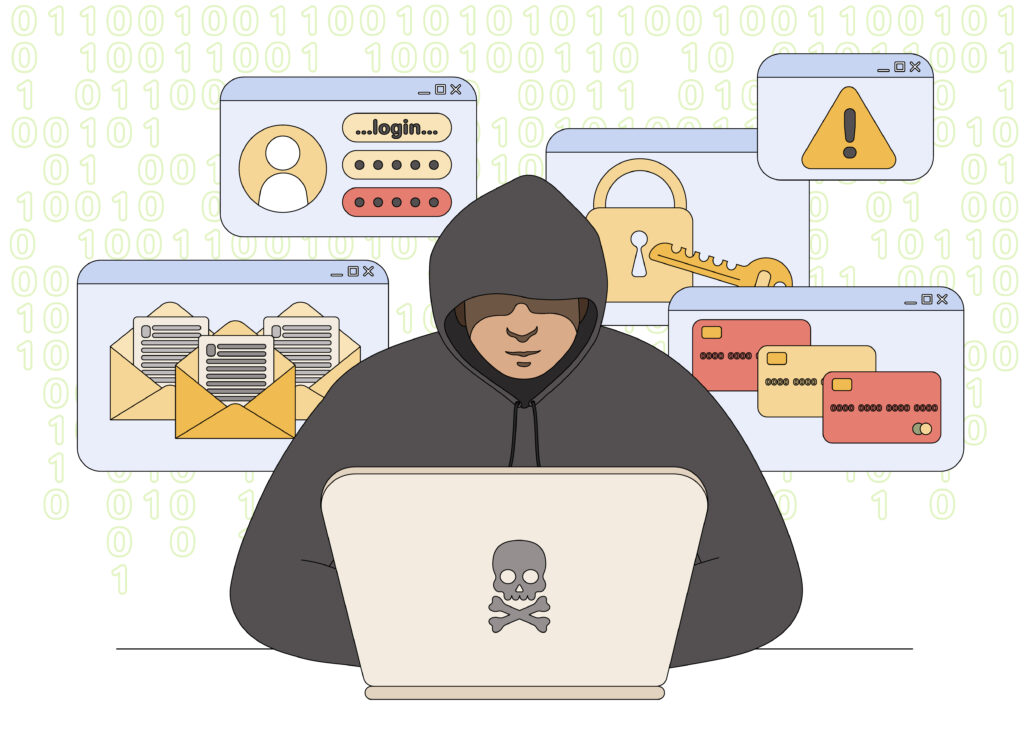In the digital age, where technology intertwines with almost every facet of our lives, the terms “malware” and “viruses” have become synonymous with online threats. However, these terms refer to distinct types of malicious software that pose different risks and exhibit varying characteristics. In this article, we’ll delve into the world of cybersecurity and explore the differences between malware and viruses.

Defining Malware and Viruses:
Malware: Malware, short for “malicious software,” is an umbrella term that encompasses a wide range of software designed to infiltrate, damage, or gain unauthorized access to computer systems, networks, and data. Malware includes various types such as viruses, worms, Trojans, ransomware, spyware, adware, and more. Its primary goal is to compromise the integrity and security of digital devices and information.
Viruses: A virus is a specific type of malware that attaches itself to legitimate programs or files and replicates by infecting other files. Much like a biological virus, a computer virus requires a host to spread and execute its malicious code. When an infected file is executed, the virus activates, potentially causing a range of harmful effects, from data corruption to unauthorized access.
Distinguishing Characteristics:
-
Propagation Mechanism:
- Malware: Malware can utilize various methods to spread, such as email attachments, malicious downloads, compromised websites, and infected removable storage devices.
- Viruses: Viruses specifically require a host program or file to attach to. They spread by attaching themselves to executable files or documents, effectively “infecting” these files.
-
Replication:
- Malware: While various types of malware can replicate, not all of them rely on replication to spread. Some malware, like Trojans or spyware, focus more on their specific malicious tasks rather than replication.
- Viruses: Viruses are defined by their ability to replicate and spread by attaching to other files. This self-replicating behavior is a hallmark of viruses.
-
Activation:
- Malware: Different types of malware have different activation triggers. Some malware activates when a specific action is taken, such as visiting a compromised website or clicking on a malicious link.
- Viruses: Viruses activate when the host file or program is executed. They may then perform their intended actions, which can range from displaying messages to damaging files.
-
Damage and Payload:
- Malware: The effects of malware can vary widely. Ransomware, for example, encrypts files and demands a ransom, while spyware secretly gathers sensitive information.
- Viruses: Viruses often modify or corrupt files, leading to data loss, system crashes, or other disruptive outcomes.
-
Removal and Detection:
- Malware: Detecting and removing malware requires the use of antivirus software and other security tools. These tools identify patterns, behaviors, or signatures associated with various types of malware.
- Viruses: Antivirus software is particularly effective in detecting and removing viruses. However, their attachment to legitimate files can make them challenging to eradicate without damaging the host file.
Protecting Against Malware and Viruses:
-
Security Software: Employ robust antivirus and antimalware software that is regularly updated to detect and neutralize a wide range of threats, including viruses.
-
Regular Updates: Keep your operating system, software, and applications up to date. Updates often contain security patches that address vulnerabilities exploited by malware.
-
Safe Browsing Habits: Avoid clicking on suspicious links or downloading files from untrusted sources. Be cautious when opening email attachments, especially from unknown senders.
-
Firewalls: Activate firewalls on your devices and networks to monitor incoming and outgoing traffic, acting as a barrier against unauthorized access.
-
Backup Strategy: Regularly back up your important data to external sources. In the event of a malware attack, having backups can help you restore your data without paying ransoms.
-
Education: Educate yourself and others about cybersecurity best practices. Awareness of potential threats can prevent accidental exposure to malware and viruses.
In conclusion, the terms “malware” and “viruses” are often used interchangeably, but they represent distinct categories within the realm of cybersecurity. Malware is a broader term encompassing various malicious software, while viruses specifically refer to a type of malware that replicates by attaching to host files. Understanding these differences empowers users to better protect themselves against a wide range of online threats, contributing to a safer digital experience.